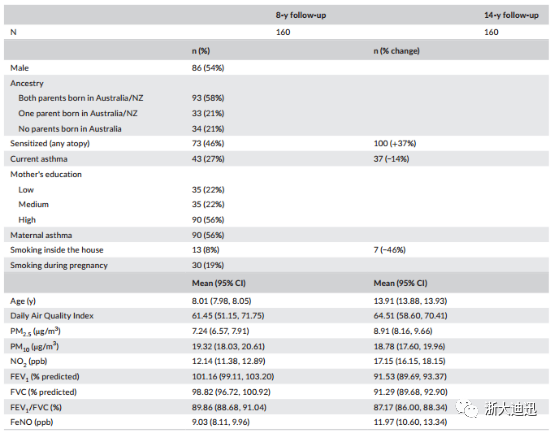Release date:2020-10-30

Clinical & Experimental Allergy
[IF:5.158]
Tree pollen exposure is associated with reduced lung function in childrenDOI: 10.1111/cea.13711
Abstract:
Background: Allergic disease is a recognized global epidemic and a significant cause of ill health and poor quality of life. The prevalence of pollen allergy is high throughout the world, and pollen exposure itself plays a role in emergency department presentations and hospitalizations for asthma. Lung function and airway inflammation are important measures of asthma activity and control.
Methods: A cohort of high-risk children living in Sydney, Australia had spirometry and fractional exhaled nitric oxide (FeNO) measured at 8 and 14 years of age. Ambient pollen concentration on the day of lung function measurement and up to three days prior was used as the exposure measure. Residential greenness was derived from satellite imagery. We modelled the association between six pollen types and lung function and FeNO. We also assessed modifying effects of residential greenness.
Results: Casuarina, cypress and Pinus pollen in the air the day before measurement and 3 days prior respectively, were associated with reduced lung function in 8-yearolds. The pollen exposures were associated with decreases in FEV1 and FVC; however, the FEV1/FVC ratio was not affected. Effect modification by greenness was not observed due to loss of power.
Conclusions: Airborne tree pollen of cypress, Casuarina and Pinus and not grass in some regions may be detrimental to childhood lung function.
First Author:
Katrina A Lambert
Correspondence:
Bircan Erbas, School of Public Health, La Trobe University, Rm 129, Health Sciences 1, Bundoora, Vic. 3086, Australia.
All Authors:
Katrina A Lambert, Constance Katelaris, Pamela Burton, Christine Cowie, Caroline Lodge, Frances L Garden, Luke A Prendergast, Brett G Toelle, Bircan Erbas
2020-10-30 Article
 杭州浙大迪迅生物基因工程有限公司
杭州浙大迪迅生物基因工程有限公司
